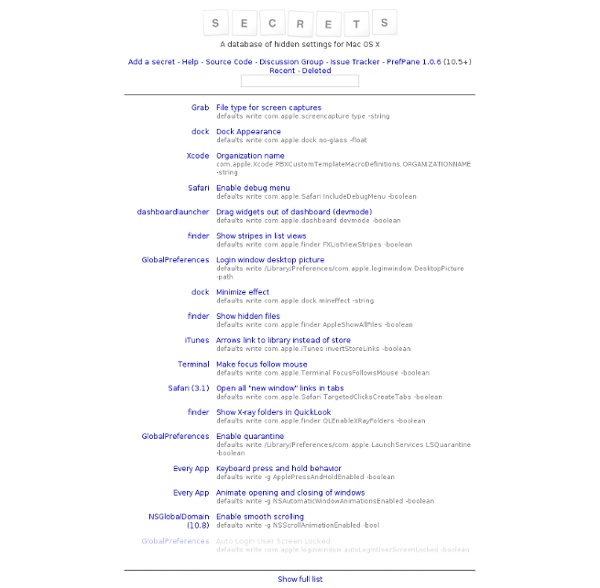



Undercover Bad news for thieves Undercover is the premier theft-recovery software for the Mac, iPhone or iPad. This revolutionary program helps you locate and recover your stolen devices. Thanks to the new web app, users can follow their stolen devices in real-time. Newegg Canada - Computer Products, Laptops, Electronics, HDTVs, Digital Cameras, Cellphones and More! Thunderbolt to Gigabit Ethernet Adapter: Frequently Asked Questions Languages Learn more about the Apple Thunderbolt to Gigabit Ethernet Adapter and the Apple Thunderbolt to Firewire Adapter. Which computers support these Thunderbolt adapters? All Thunderbolt-equipped Mac computers support these adapters. The adapters require OS X Lion v10.7.4 or later. Where can I connect the adapters? Connect them directly to the Thunderbolt port on your Mac. Are there other requirements for using these adapters? If you are connecting multiple devices ("daisy chaining"), at least one computer on the Thunderbolt chain needs to act as a host. Can other devices on the Thunderbolt chain affect the performance of these adapters? Yes. How much bus power does the Thunderbolt to FireWire Adapter supply? The Thunderbolt to FireWire Adapter provides up to 7W of bus power. Can these adapters be connected to devices that do not support Thunderbolt? No. My Mac mini (Mid 2011) does not sleep when an Apple Thunderbolt to Ethernet Adapter is connected. Yes. Last Modified: Aug 2, 2012
Disable Mac Mail.app Inline Image Attachments | Micah Gilman's Blog I’ve found this to be a real annoyance, especiallly with a business where I have to send images in emails often. Mail.app by default displays images inline, and most email clients won’t recognize them as attachments. If you right click (or ctrl click with a one button mouse) on the image you can select to view the image as icon, which makes it behave like a normal attachment. To make this the default behavior you’ll need to use the Terminal to set the preference. Terminal is in Applications>Utilities. defaults write com.apple.mail DisableInlineAttachmentViewing -bool yes That will make every attachment you send act like an attachment instead of a pretty unusable decoration. If you decide this isn’t what you’re looking for, to restore inline attachment viewing type: defaults write com.apple.mail DisableInlineAttachmentViewing -bool false Restart Mail and you’re back to normal.
SuperCollider » About Day One Apple Devising Smart Hybrid e-Paper/Video iOS Displays The Problem to Solve Apple states that traditional electronic devices include a single display for outputting visual content. For example, a traditional device may include a liquid crystal display (LCD) or organic light-emitting diode (OLED) display for outputting color visual content. For example, an LCD or OLED display may be optimal for high-resolution or dynamic color content while an electronic paper display may be optimal for relatively static black-and-white content. Apple's Solution Apple patent covers systems and methods for switching between an electronic paper display and a video display based on at least one feature of visual content. According to Apple, control circuitry in an electronic device could analyze visual content to determine one or more features of the visual content. In some embodiments, portions of a device's electronic paper display and video display may be selectively enabled based on the visual content to be displayed in that portion.
Paradigm Reborn | Creating an HTML signature in Apple Mail Tired of that plain text e-mail signature that I’ve been using for years, I recently endeavored to create something a bit more professional and refined for my e-mails. Apple Mail allows you to control the font, color, and even insert images (which are included as attachments) into a signature. But it doesn’t give you direct control of the HTML and CSS, nor does it provide a solution for including images in your e-mail without them being attachments. These limitations meant that I first had to design the HTML and CSS of my new signature outside of Mail, and then save that HTML file as a Mail signature. Here’s how it’s done. Designing the HTML/CSS From my experience designing HTML e-mail templates for FireFly Transmit , our e-mail campaign application, I was already familiar with the obstacles of designing HTML e-mails. Use tables for basic layout. Use inline CSS. Only use basic CSS properties. Use absolute URLs. Link to images. Exclude HTML, HEAD, and BODY tags. Quit Mail . Re-open Mail .